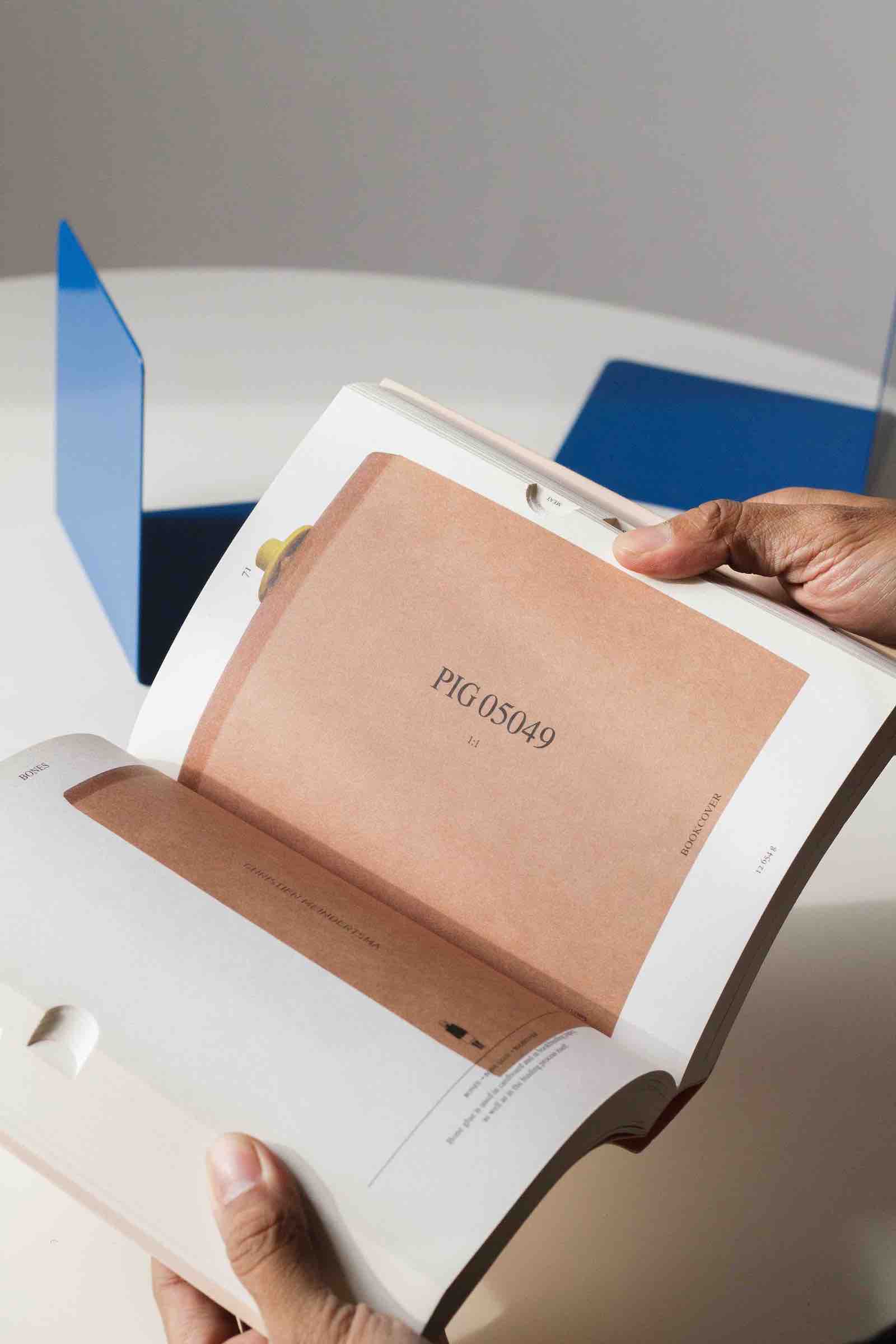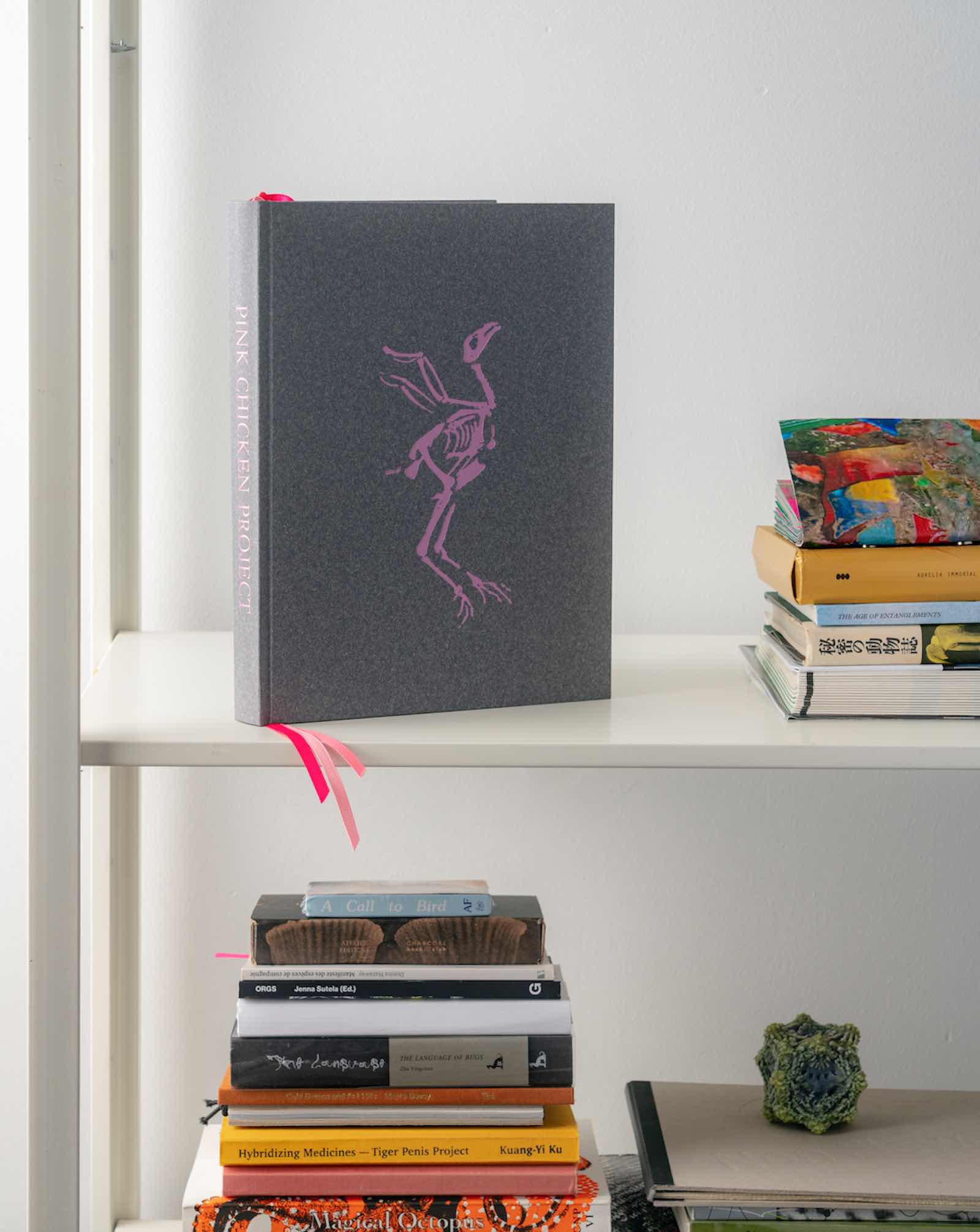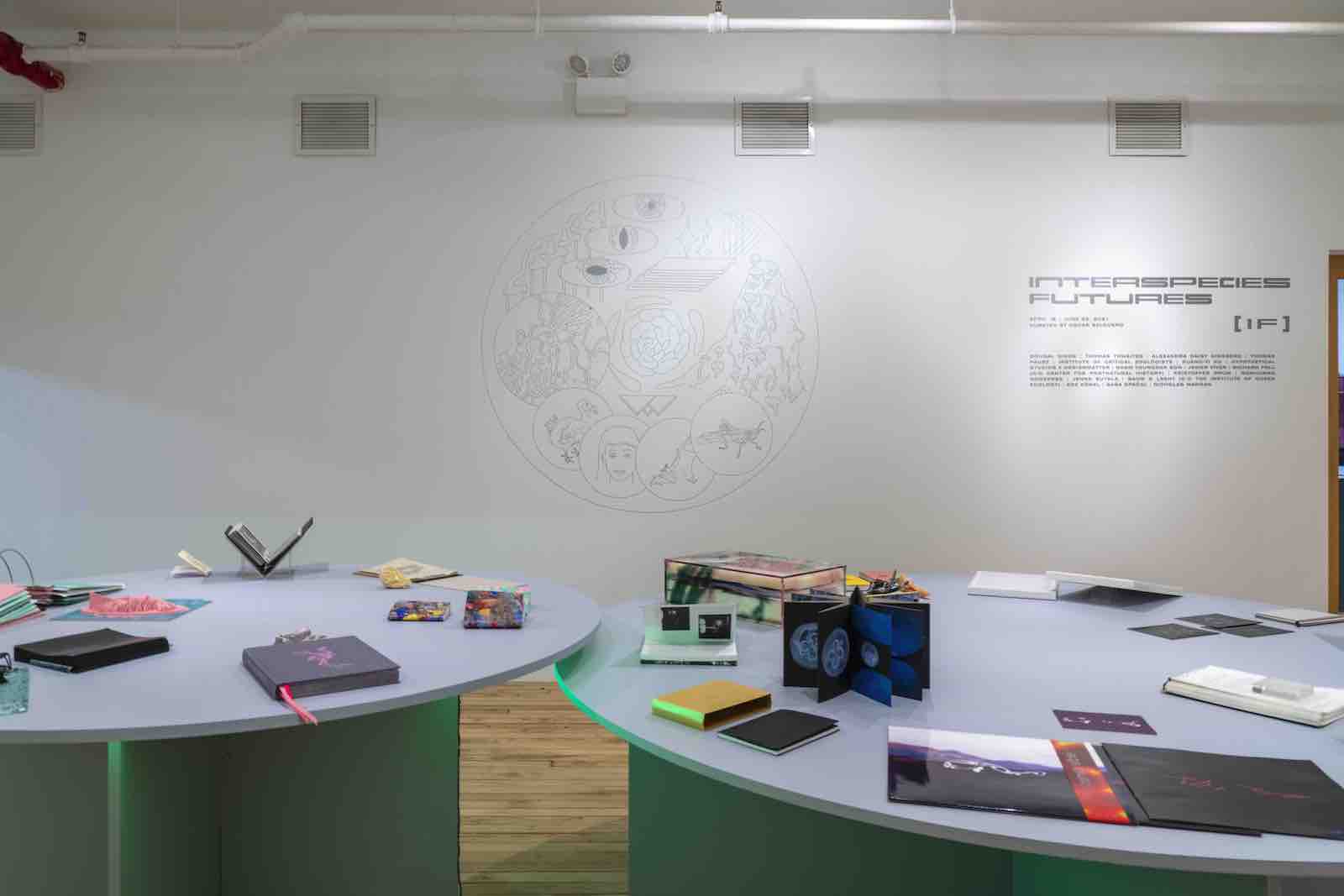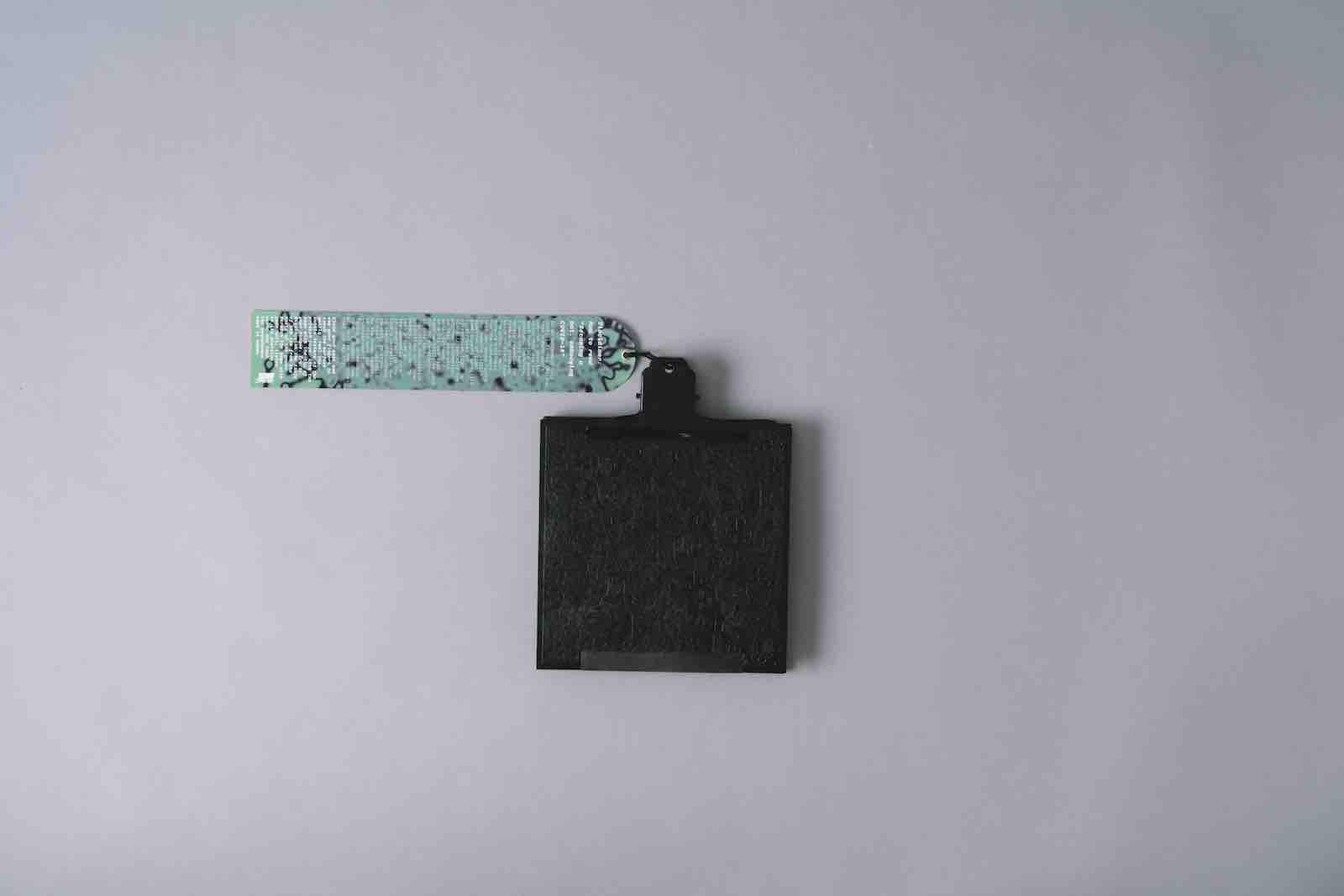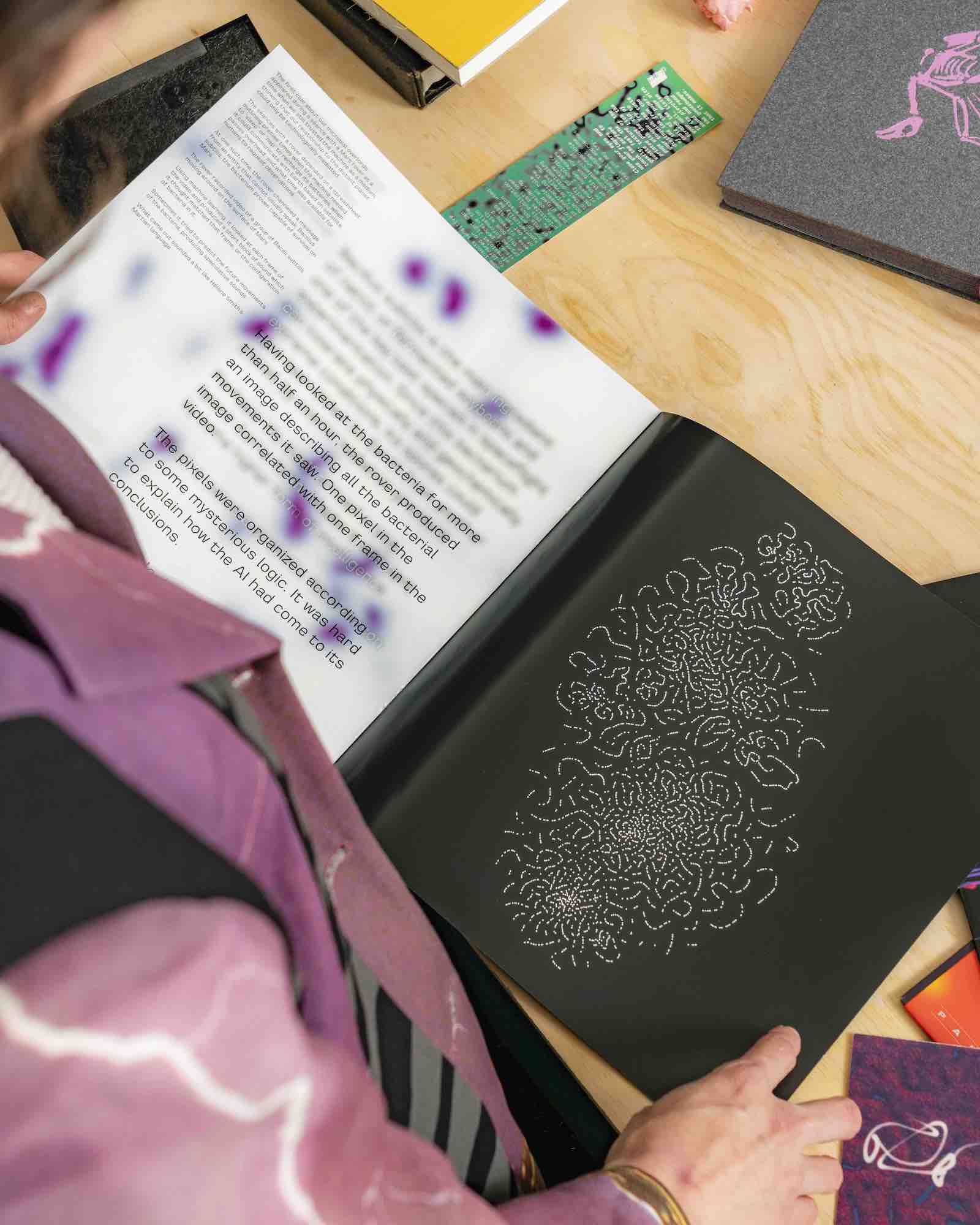How about the most recent book?
The most recent one challenges the traditional concept of the book as it is actually a set of two scent bottles (“Soma:Spore” and “Matsutake Musk,” 2023) nested in a mycelium-formed container and with a story card attached to them. The artist, Agustine Zegers from Chile, operates under the project name ‘Agar Olfactory’ and delivers a special account for each fragrance. For example, Matsutake Musk represents a fictional scent created in response to growing symbiotic processes between fungi and humans in the year 2077.
And your favorite book in your collection?
Perhaps one of the most significant ones is Pink Chicken Project (2021). This is a book I commissioned to the Swedish collective Nonhuman Nonsense as part of a show I curated at Center for Book Arts, titled Interspecies Futures [IF] (2021). It was designed and bound in Berlin in collaboration with a dear friend Claudia de la Torre, founder of backbonebooks. The premise is spectacular: What if by employing genetic engineering (a gene drive) we were to turn all common chickens’ color into pink. pink feathers, pink bones. Could their fossilized pink bones leave a pink trace in our geological era, indicating to far-future humans that this is the century in which we began to genetically modify organisms on a mass scale?
The book exists as a single edition and it’s presented as a rock slab with a fossilized pink chicken skeleton embossed in the cover plate.
Best bargain you’ve found?
Maybe a signed copy of The Age of Spiritual Machines (1999) by Ray Kurzweil. I found it at Housing Works Bookstore in NY for $10. Ray is a principal researcher and AI visionary at Google. Years after this publication, he proposed the concept of the Singularity, as the moment in which computers overtake the capabilities of the human brain (by 2045). I believe his books will be regarded as key documents in the next stage of the human/AI paradigm, an era that already has a name: the Novacene (as coined by James Lovelock at the age of 99, back in 2019 in the book Novacene: The Coming Age of Hyperintelligence).
How about The One that Got Away?
I saw an original Codex Seraphinianus (NY edition, 1983) book also at Housing Works Bookstore maybe 4 years ago and it was only $150. I know these go for up to $1000 in decent condition these days. This book is an interesting example of speculative imagination applied to an encyclopedia format. In the 21st century it has proven to be quite influential, especially to many of the artists whose works fall at the intersection of science and artistic research, such as Dr. Alexandra Daisy Ginsberg, editor of Synthetic Aesthetics: Investigating Synthetic Biology’s Designs on Nature (2014).
What would be the Holy Grail for your collection?
First edition Micrographia (1665) by Robert Hooke. If only just to feel the same sense of awe people might have felt upon opening the book’s most dramatic foldout which depicted a drawing of a magnified flea at a scale and in detail never imagined before. It might have felt like science fiction. Like jumping dimensions into a new physical realm.
Who is your favorite bookseller / bookstore?
My favorite bookstore remains Strand Books in NY. I still find magic among the stacks there. In terms of bookstores that I haven’t visited but that I am constantly in awe of the material they carry: Inga Books in Chicago, and Punch in Bucharest, Romania. Both independent and really up to date in terms of emerging areas of artistic and philosophical research. Another great one is 50 Watts Books in Philadelphia. They specialize in “visually-striking and unusual books from around the world.”
What would you collect if you didn’t collect books?
Rocks. They are the books of deep time.





